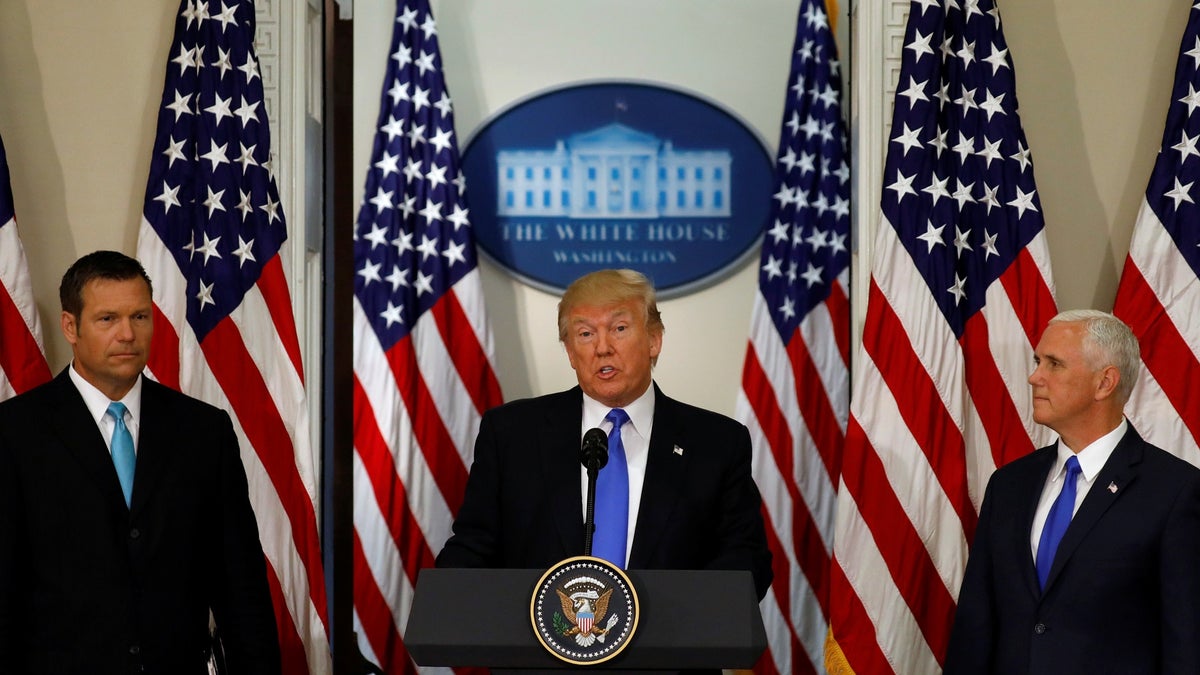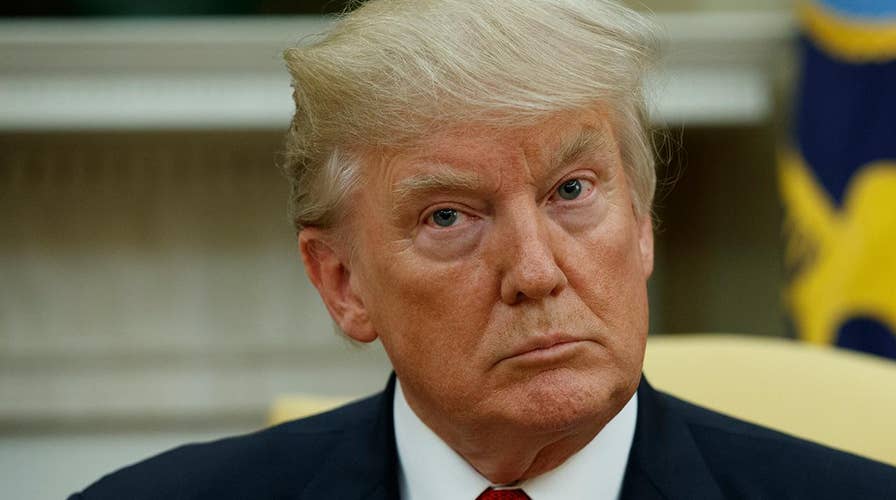Trump voter fraud commission: Some refusing to cooperate
President Donald Trump’s voter fraud commission sent a letter to all 50 states, requesting full voter-data roll, to further investigate alleged voter fraud during the 2016 presidential election. Some state officials are already refusing to cooperate
President Trump dismantled his controversial voter fraud commission as the group faced lawsuits, oppositions from states and fighting among its members.
On social media, Trump accused “Democrat States” of refusing to turn over information requested by the Presidential Advisory Commission on Election Integrity – tasked with investigating alleged voter fraud in the 2016 election – because “they know that many people are voting illegally.”
“System is rigged,” Trump said, calling for more stringent voter ID laws.
A June 2017 letter addressed to states from the commission asked for “publicly available voter roll data.” However, the letter also requested a lot of specific details, including: parts of Social Security numbers, dates of birth, addresses and information regarding felony convictions or military status.
Officials plan to erase the information already collected by the commission, White House Director of Technology Charles Herndon said in a declaration submitted to federal court.
The commission was also hit with a bevy of legal obstacles by organizations and state lawmakers regarding its practices.
What was the commission?
Trump created the commission through an executive order in May. It was expected to investigate instances of alleged voter fraud in the 2016 election.

President Donald Trump speaks at the first meeting of the Presidential Advisory Commission on Election Integrity co-chaired by Kansas Secretary of State Kris Kobach (L) and Vice President Mike Pence (R). (Reuters/Kevin Lamarque)
Vice President Mike Pence chaired the commission with Kansas Secretary of State Kris Kobach serving as its vice chair.
Maine Secretary of State Matthew Dunlap, a Democrat on the commission, sued the group in federal court. He alleged, in part, that it violated federal law by refusing to provide him documents made available to other members.
Dunlap also blamed Kobach and his allies for “stonewalling” progress on the commission.
Why did Trump create it in the first place?
In the days following his inauguration, Trump called for a “major investigation” into alleged voter fraud in the U.S.
Trump has claimed multiple times that between 3 and 5 million “illegals” voted for Democrat Hillary Clinton in the 2016 presidential election, thus costing him the popular vote. These claims have not been verified.
However, critics have said the commission was part of a campaign to make it more difficult for lower-income and minority voters to access a ballot box. Others said it was an effort by the Trump administration to distract from the ongoing investigation into Russian collusion in the 2016 election.
Why did Trump decide to disband it?
White House press secretary Sarah Sanders said Trump signed an executive order to dismantle the commission “rather than engage in endless legal battles at taxpayer expense.”
She said the Department of Homeland Security has been asked to review the group’s initial findings and “determine [the] next course of action.”
In his declaration, Herndon said “state voter data will not be transferred to or accessed or utilized by” DHS, Politico noted.
Kobach called the disbanding of the commission a “tactical change” and said DHS can still pursue its own probe into election fraud in a quicker manner.
"The Democrats, both on and off the commission, made very clear that they were not interested in determining the scope and extent of voter fraud and, indeed, they were trying to stop the commission in its tracks," Kobach said. "The Democrats lost their opportunity, lost their seat at the table, by stonewalling."
Several secretaries of state, Republican and Democrat, bucked a request for sensitive data by the commission or said they would only provide limited data.
Mississippi Secretary of State Delbert Hosemann, a Republican, suggested the commission “go jump in the Gulf of Mexico.”
Even Kobach said his state would only provide some of the data requested by his commission.
The Associated Press contributed to this report.

























